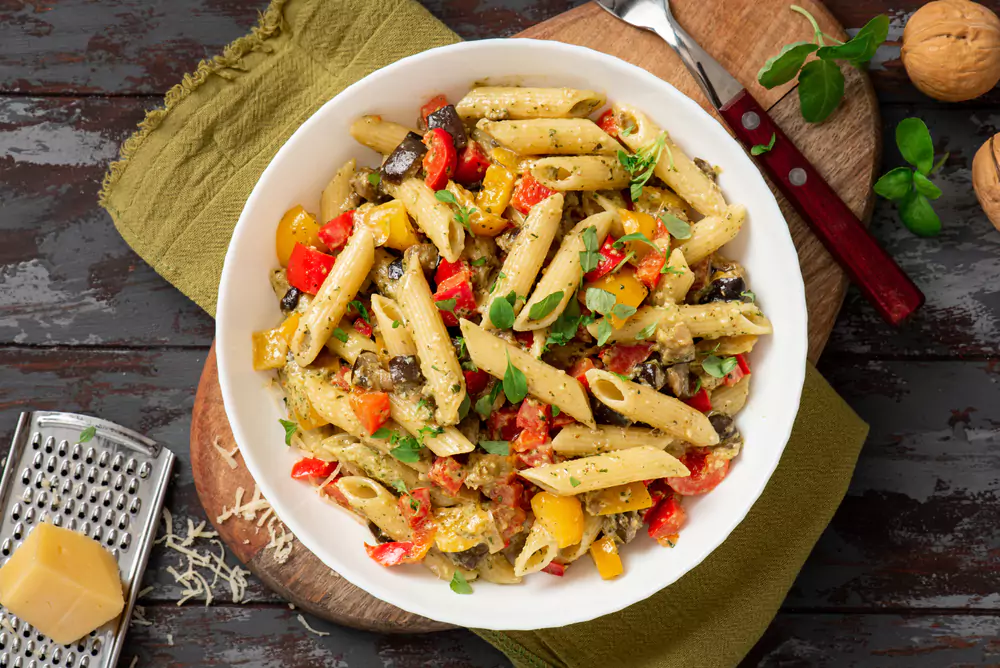Are you a fan of pasta salad? Whether it’s a refreshing side dish for a summer barbecue or a satisfying lunch option, pasta salad is a versatile and delicious choice. But what happens when you make too much and have leftovers? How long does pasta salad last in the fridge before it starts to spoil? In this article, we will delve into the factors that affect the shelf life of pasta salad, including ingredients, storage conditions, and food safety guidelines. So, let’s explore how long your favorite pasta salad can stay fresh and tasty in the refrigerator!
How Long Does Pasta Salad Last In The Fridge?
Pasta salad can typically last in the fridge for about 3 to 5 days if stored properly in an airtight container. It is important to note that the exact shelf life may vary depending on the ingredients used and how it was prepared. To ensure the longevity of pasta salad, it is recommended to keep it refrigerated at a temperature below 40°F (4°C) and discard it if there are any signs of spoilage, such as an off smell or unusual texture. It is always best to use your judgment and consume the salad within a few days to maintain its freshness and quality.
5 Factors Affecting The Shelf Life Of Pasta Salad
Here are five factors that affect the shelf life of pasta salad, along with references to authoritative sources:

Temperature:
Pasta salad is best stored in the refrigerator at a temperature of 40°F (4°C) or below. Higher temperatures can cause the growth of harmful bacteria, such as Staphylococcus aureus and Bacillus cereus, which can cause foodborne illness. (Source: FoodSafety.gov)
Humidity:
Pasta salad should be stored in a dry environment to prevent the growth of mold and bacteria. High humidity can cause the salad to become soggy and develop an unpleasant texture. (Source: The Kitchn)
Air exposure:
Pasta salad should be stored in an airtight container to prevent the growth of bacteria and mold. Exposure to air can cause the salad to dry out and become stale. (Source: Cook’s Illustrated)
Presence of acidic ingredients:
Pasta salad containing acidic ingredients, such as tomatoes, can cause the salad to become more susceptible to spoilage. The acidity can lower the pH of the salad, creating an environment that is more favorable for the growth of harmful bacteria. (Source: Food Safety News)
Type of pasta:
Different types of pasta have different shelf lives. For example, whole wheat pasta has a shorter shelf life than refined white pasta due to its higher moisture content. Additionally, pasta with fillings or add-ins, such as meat or vegetables, may have a shorter shelf life than plain pasta.
Signs Of Spoilage In Pasta Salad
Signs of spoilage in pasta salad can include changes in appearance, texture, smell, and taste. It is important to be aware of these signs to ensure the safety and quality of the salad. Here are some specific indicators of spoilage:
Appearance:
One of the first signs of spoilage in pasta salad is a change in appearance. Look for any discoloration or mold growth on the pasta or vegetables. If you notice any slimy or sticky residue on the salad, it may indicate bacterial growth.
Texture:
Spoiled pasta salad may have a mushy or slimy texture. The pasta noodles may become overly soft or clump together. Vegetables in the salad can also become wilted or soggy.
Smell:
A strong, unpleasant odor is a clear indication that the pasta salad has gone bad. If you detect a sour, rancid, or off-putting smell coming from the salad, it is best to discard it.
Taste:
Spoiled pasta salad will often have an off taste that is noticeably different from its usual flavor. It may taste sour, bitter, or generally unpleasant.
Proper Storage Techniques For Extending The Lifespan Of Pasta Salad
Proper storage techniques are essential for extending the lifespan of pasta salad and maintaining its freshness. By following these guidelines, you can ensure that your pasta salad remains safe to eat and enjoyable for an extended period.
Refrigeration:
The most crucial step in storing pasta salad is refrigeration. Once prepared, allow the pasta salad to cool down to room temperature before placing it in an airtight container. It is important to refrigerate the pasta salad within two hours of preparation to prevent bacterial growth. Store the container in the refrigerator at a temperature below 40°F (4°C).
Airtight Containers:
To maintain the quality and freshness of pasta salad, it is vital to store it in an airtight container. This prevents moisture loss and exposure to air, which can lead to drying out and spoilage. Choose a container that is specifically designed for food storage and has a tight-fitting lid. Glass or plastic containers with secure seals are commonly used for this purpose.
Separate Dressing:
If your pasta salad contains dressing, it is advisable to store it separately from the other ingredients. This prevents the dressing from saturating the pasta and vegetables, which can result in a soggy texture. Keep the dressing in a separate container and add it to the pasta salad just before serving or when ready to consume.
Labeling and Dating:
To keep track of the freshness of your pasta salad, it is helpful to label the container with the date of preparation. This allows you to monitor how long it has been stored and helps you determine if it is still safe to eat. It is recommended to consume refrigerated pasta salad within 3-5 days for optimal quality.
Avoid Freezing:
While freezing may be an option for some dishes, it is generally not recommended for pasta salad. Freezing can alter the texture and quality of the ingredients, resulting in a less desirable taste and appearance when thawed. If you need to store pasta salad for an extended period, it is best to make fresh batches as needed.
Conclusion
In conclusion, pasta salad can last in the fridge for up to 3-5 days if stored properly. It is important to ensure that the salad is stored in an airtight container to prevent moisture and bacteria from entering. Additionally, it is crucial to keep the salad at a temperature below 40°F (4°C) to inhibit bacterial growth. If the pasta salad has been left out at room temperature for more than 2 hours, it is recommended to discard it to avoid the risk of foodborne illnesses.
Frequently Asked Questions (FAQ’s)
How Long Is Leftover Pasta Salad Good For?
Leftover pasta salad can be stored in the refrigerator for up to 3-5 days, but it is important to check for any signs of spoilage before consuming.
Can You Eat 2-Week-Old Pasta Salad?
Yes, you can eat a 2-week-old pasta salad, but it is important to ensure that it has been stored properly in the refrigerator and does not show any signs of spoilage, such as a foul smell or mold growth.
Can I Eat a 3 Day Old Pasta Salad?
Yes, you can eat a 3-day-old pasta salad, but it is important to ensure that it has been stored properly in the refrigerator and does not show any signs of spoilage.
Does Pasta Salad Go Bad In The Fridge?
Yes, pasta salad can go bad in the fridge if it is not stored properly or if it has been kept for too long.
Can You Freeze Pasta Salad?
Yes, you can freeze pasta salad, but it is important to note that the texture and taste may be altered after thawing.
How Can You Tell If Pasta Salad Has Gone Bad?
To determine if pasta salad has gone bad, look for signs such as a sour or rancid smell, mold growth, slimy texture, or an off-taste.
How Long Does Oil-Based Pasta Salad Last In The Fridge?
Oil-based pasta salad can last in the fridge for up to 3-5 days, but it is important to note that the quality and taste may deteriorate over time.
How To Tell If Pasta Salad Is Bad?
To determine if pasta salad is bad, check for signs such as an off smell, mold growth, slimy texture, or unusual color.

![Can You Freeze Tuna Salad? [ Storage Guide 2023 ] Can You Freeze Tuna Salad](https://juicerhunter.com/wp-content/uploads/2023/09/Can-You-Freeze-Tuna-Salad-150x150.webp)




